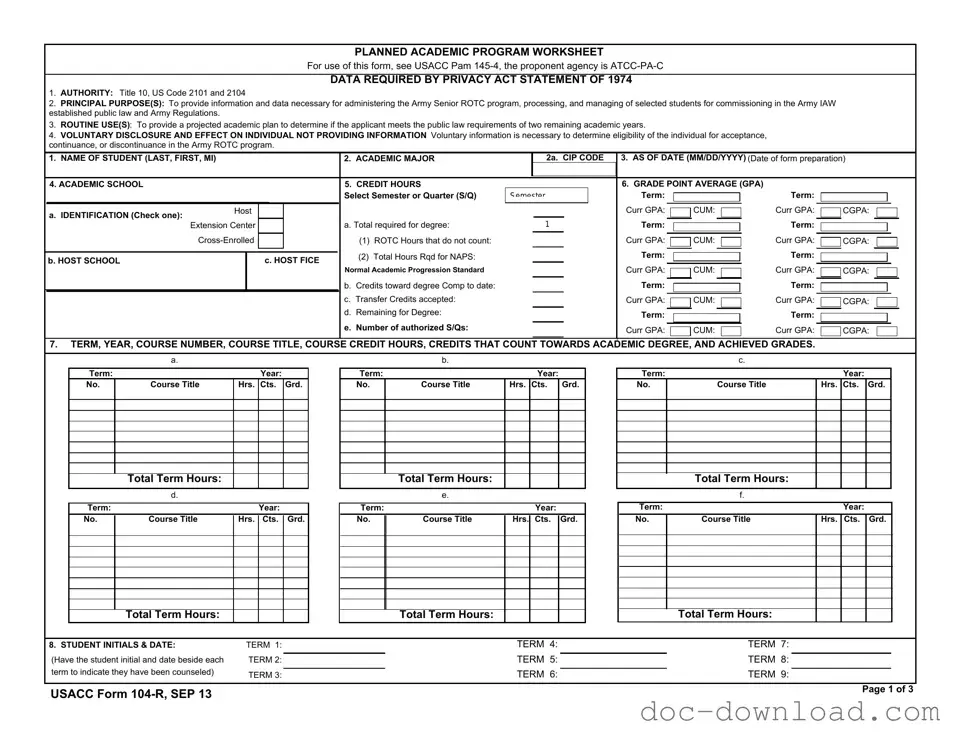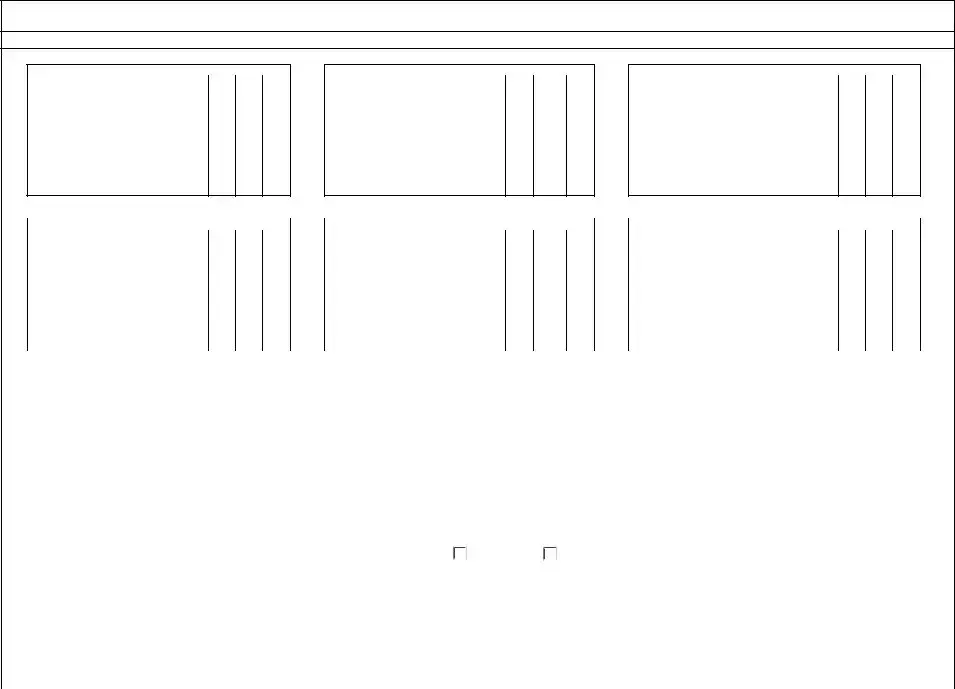The 104 R form, known as the Planned Academic Program Worksheet, shares similarities with the FAFSA (Free Application for Federal Student Aid). Both documents serve as essential tools for students pursuing education, particularly in the context of financial aid and academic planning. The FAFSA collects information about a student's financial situation to determine eligibility for federal aid, while the 104 R focuses on the academic courses and requirements needed for ROTC program participants. Both forms require detailed personal information and academic history, ensuring that students meet necessary guidelines for their respective programs.
Another document akin to the 104 R is the academic transcript. An academic transcript provides a comprehensive record of a student’s academic performance, including courses taken, grades earned, and credits completed. Like the 104 R, transcripts are used to assess a student’s progress towards their degree. While the 104 R outlines future academic plans, the transcript reflects past performance, making both documents vital for academic evaluation and planning in higher education.
The Degree Audit Report (DAR) is also similar to the 104 R form. A DAR is an official document that outlines the courses a student has completed and those remaining to fulfill degree requirements. This report helps students track their academic progress, similar to how the 104 R helps ROTC students plan their academic journey. Both documents serve as guides to ensure that students stay on track to meet their educational goals.
Additionally, the Student Educational Plan (SEP) bears resemblance to the 104 R form. An SEP is a personalized document that outlines a student's course selections and academic objectives. Just like the 104 R, it is often used to ensure that students are aware of the courses they need to take to graduate on time. Both documents facilitate communication between students and academic advisors, ensuring that students make informed decisions about their education.
The Program of Study (POS) is another document that aligns with the 104 R. A POS details the specific courses and requirements needed for a particular academic program. It serves as a roadmap for students, guiding them through their educational journey. Both the POS and the 104 R emphasize the importance of planning and tracking academic progress, ensuring that students remain compliant with program requirements.
The Enrollment Verification form is also comparable to the 104 R. This document is used to confirm a student's enrollment status at an educational institution. Similar to the 104 R, it provides information that may be required for financial aid or military benefits. Both documents play a crucial role in validating a student's academic status and eligibility for various programs.
The Course Registration form shares similarities with the 104 R form as well. This form is used by students to officially enroll in courses for an upcoming semester or term. While the 104 R focuses on long-term academic planning, the Course Registration form captures immediate course selections. Both documents are essential for ensuring that students are actively managing their academic paths and meeting their educational goals.
The Illinois Motor Vehicle Bill of Sale form is a legal document that records the sale of a vehicle between two parties in the state of Illinois. It acts as proof of purchase and documents the transfer of ownership from the seller to the buyer. This form is essential for both the seller's and buyer's protection and is required for the registration of the vehicle, and you can get an editable document download to facilitate the process.
Lastly, the Academic Advising Worksheet is akin to the 104 R. This worksheet is used during advising sessions to help students map out their academic plans and discuss course selections with their advisors. Like the 104 R, it encourages proactive planning and communication about academic goals. Both documents aim to assist students in navigating their educational experiences effectively.



